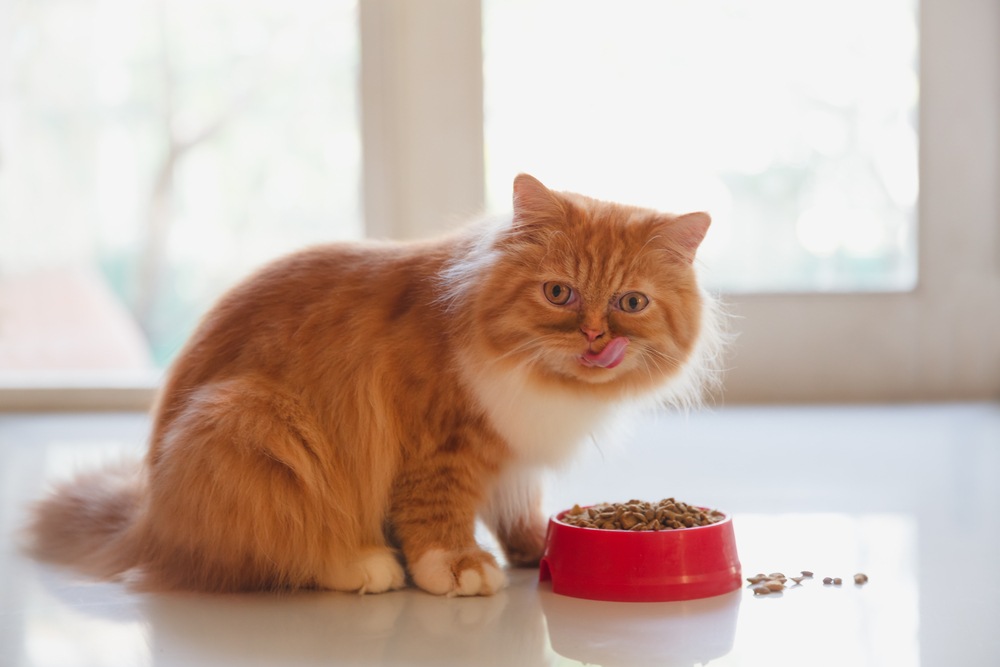When we think of feline nutrition, protein often takes center stage. However, fiber in a cat’s diet plays a vital, often overlooked role in supporting digestive health, maintaining stool quality, and even managing specific medical conditions.
While cats are obligate carnivores, meaning they require animal-based proteins for survival, dietary fiber can provide significant health benefits when used appropriately. This article explores the importance of fiber for cats, its types, recommended levels, and how to choose the best high-fiber cat food.

Why Fiber Matters in a Cat’s Diet
Dietary fiber is not a source of essential nutrients like amino acids or fatty acids, but it plays a crucial part in maintaining a healthy digestive system. Here’s how:
Learn more about: Do cats need high protein
- Supports Digestive Health: Fiber helps regulate bowel movements, improve stool quality, and prevent constipation or diarrhea.
- Aids Weight Management: High-fiber diets can promote a feeling of fullness, which may help overweight cats reduce caloric intake.
- Balances the Gut Microbiome: Certain prebiotic fibers encourage the growth of beneficial gut bacteria, supporting long-term digestive health.
- Helps Manage Medical Conditions: Veterinarians often recommend psyllium-enhanced fiber blends or special gastrointestinal fiber formulas to manage conditions like hairballs, colitis, or chronic diarrhea.
Types of Fiber in Cat Food: Soluble vs. Insoluble
Not all fibers are created equal. Understanding the difference between soluble and insoluble fibers is essential when evaluating cat food:
Soluble Fiber
- In the digestive system, it absorbs water and transforms into a gel-like substance.
- It is fermented by gut bacteria, generating beneficial short-chain fatty acids.
- Supports nutrient absorption and helps maintain a healthy gut microbiome.
- Common sources: beet pulp, chicory root, and prebiotic fibers.
Insoluble Fiber
- It stays insoluble in water, helping to increase stool bulk.
- Promotes regular bowel movements and helps prevent constipation.
- Common sources: cellulose, pumpkin, and psyllium husk.
A balanced blend of both soluble and insoluble fibers ensures optimal digestive benefits without compromising nutrient absorption.
Recommended Fiber Levels for Cats
The ideal fiber level depends on your cat’s needs:
- Moderate Fiber Diets (~6% dry matter): Suitable for most healthy adult cats. Supports normal digestion and stool consistency.
- High-Fiber Diets (~12% dry matter): Recommended for cats with specific conditions like obesity, chronic constipation, or gastrointestinal issues.
- Crude Fiber vs. Dry Matter Basis: Always evaluate fiber content on a dry matter basis to account for moisture differences between canned and dry foods. Canned foods may appear low in fiber due to high moisture content, but their adjusted fiber levels can be comparable to dry foods.
How to Choose the Right High-Fiber Cat Food
When choosing a fiber-rich diet, keep these expert tips in mind:
Check the Ingredient List
Look for high-quality fiber sources such as beet pulp, chicory root, or psyllium husk rather than cheap fillers.
Evaluate the Guaranteed Analysis
Review crude fiber levels, but convert to a dry matter basis for accurate comparisons.
Look for Prebiotic Support
Foods containing prebiotic fibers promote a healthy gut microbiome, which can improve digestion and immune health.
Consider Functional Formulas
Veterinary diets like gastrointestinal fiber response formulas combine psyllium-enhanced fiber blends, highly digestible proteins, and omega-3 fatty acids (EPA, DHA) to manage sensitive stomachs and improve GI transit.
Consult Your Veterinarian
Cats with chronic digestive issues, urinary tract concerns, or obesity may require specialized diets. Some formulas include an S/O Index, which supports both digestive and urinary health.
Potential Risks of Too Much Fiber
While fiber is beneficial, excessive amounts can cause complications:
- Nutrient Dilution: Excessive fiber may reduce the availability of essential nutrients.
- Loose Stools or Diarrhea: Over-supplementation can disrupt gut balance.
- Reduced Palatability: Some cats may refuse food with high fiber levels.
Balance is key, fiber should complement, not replace, the essential nutrients in your cat’s diet.
Frequently Asked Questions (FAQs)
Most adult cats do well with 6% fiber (dry matter basis), while cats with medical conditions may require up to 12%, as recommended by a veterinarian.
Prebiotic fibers feed beneficial gut bacteria, improving digestion, immunity, and overall health.
Yes. Soluble fibers like psyllium husk can help firm loose stools by absorbing excess water.
Check stool quality: small, firm, and regular stools typically indicate a balanced diet. Persistent constipation or diarrhea may signal the need for dietary adjustments.
Indoor cats often benefit from moderate fiber to manage hairballs and maintain healthy digestion due to reduced activity levels.
Conclusion
Fiber is an essential, yet frequently overlooked, part of a cat’s diet. While cats rely primarily on animal-based proteins as obligate carnivores, incorporating the right type and amount of dietary fiber can enhance digestion, support a balanced gut microbiome, and help manage specific health conditions.
Whether you are selecting a moderate fiber diet for daily wellness or a specialized gastrointestinal formula, focus on ingredient quality, prebiotic support, and veterinary guidance to ensure your cat’s nutritional needs are fully met.


Pingback: White Cats: Breeds, Care Tips & Unique Traits Explained -
Pingback: Can Dogs Eat Salmon? Safety, Benefits & Risks -